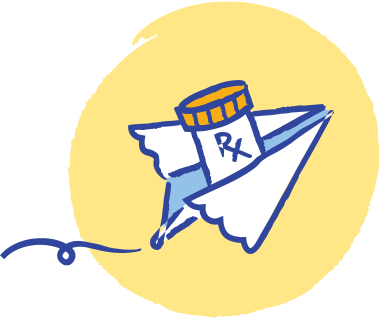Prescriptions › Dermatological Compounds
Ask your Doctor about
Topical Compounds.
For Patients:
For Providers:
Topical Compounds
No two patients are the same, which is why our compounded medications are made based on the Doctor recommendations for their patients. Below is a list of some common ingredients used in topical compounds:
| Cantharadin | Clindamycin | Clobetasol |
| Clotrimazole | Finasteride | Glycopyrrolate |
| Hydrocortisone | Hydroquinone | Kojic Acid |
| LCD | Minoxidil | Monobenzone |
| Nystatin | Salicylic Acid | Squaric Acid |
| Tacrolimus | Terbinafine HCl | Thymol |
| Tretinoin | Urea | Zinc Oxide |
If you are looking for a more complete list of compounds or if you would like a copy of a script form, please reach out to customercarevcprx.com and ask to speak to a pharmacist.
Topical Compound Dosage Forms
Cream
A thin topical that quickly absorbs into the skin, when evenly applied.
Lotion
Lighter in texture than a cream, designed to be easily absorbed by your skin.
Ointment
A thicker, heavier topical that absorbs into the skin. Ointments have a thick, semi-solid consistency.
Spray
Packaged in a non-pressurized bottle with a spray attachment, sprays are used to mist or spray fluids onto the skin.
Topical Solution
Typically lighter and less dense than creams, topical solutions are generally made from water, alcohol, and other liquids.
Topical Compounds
No two patients are the same, which is why our compounded medications are made based on the Doctor recommendations for their patients. Below is a list of some common ingredients used in topical compounds:
| Cantharadin | Clindamycin |
| Clotrimazole | Clobetasol |
| Finasteride | Hydrocortisone |
| Hydroquinone | Kojic Acid |
| LCD | Minoxidil |
| Monobenzone | Nystatin |
| Salicylic Acid | Squaric Acid |
| Tacrolimus | Terbinafine HCl |
| Thymol | Tretinoin |
| Urea | Zinc Oxide |
If you are looking for a more complete list of compounds or if you would like a copy of a script form, please reach out to customercarevcprx.com and ask to speak to a pharmacist.
Topical Compound Dosage Forms
Cream
A thin topical that quickly absorbs into the skin, when evenly applied.
Lotion
Lighter in texture than a cream, designed to be easily absorbed by your skin.
Ointment
A thicker, heavier topical that absorbs into the skin. Ointments have a thick, semi-solid consistency.
Spray
Packaged in a non-pressurized bottle with a spray attachment, sprays are used to mist or spray fluids onto the skin.
Topical Solution
Typically lighter and less dense than creams, topical solutions are generally made from water, alcohol, and other liquids.



